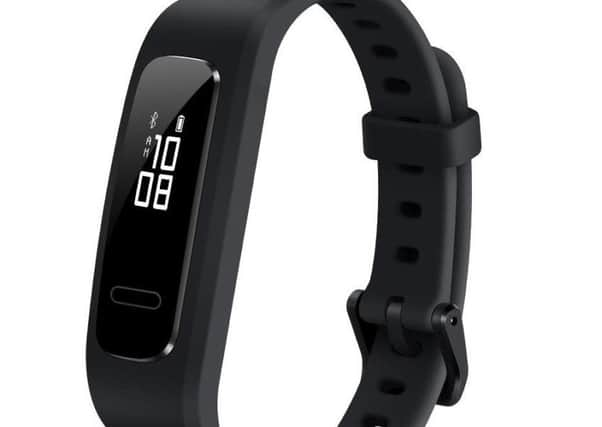Is a no-name smart watch a timely investment?


Actually, we’re comparing apples with oranges, because their features vary enormously, as do their looks. But you may be surprised at just how versatile even the most affordable models can be.
These are not the sort of fully-fledged devices that you wear as extensions of your handset, but fitness trackers which monitor your vital signs and let you know how many steps you’ve run or how long you’ve slept.
Advertisement
Hide AdAdvertisement
Hide AdYour phone can do some of that by itself, but only if you keep it with you. A watch, on the other hand, is always close by. And, of course, it will tell you the time.
The market leader in such devices is Fitbit, most of whose models manage to strike a comfortable balance between fashion and functionality. But you won’t get one for less than around £120, and it will do no more than many a watch costing half as much.
That’s because the core technology is contained within the same microchip – and variations of it are available to the makers of no-name watches in China just as readily as anyone else. Probably more so.
The technology in question is the ability to keep track of your walking, running, swimming and other preferred methods of workout, and to monitor your heart rate. This is done through a sensor on the back of the watch. You can also define your own workout and tell the watch to alert you when it’s time to move on to the next exercise. Further up the range, premium features like GPS tracking and contactless payments at shop tills are available. If that function is important to you, though, you should check that your own bank supports the model you have in mind.
Advertisement
Hide AdAdvertisement
Hide AdHuawei’s range of fitness trackers starts at just £20 on the high street, with a model that can be worn on your running shoes as well as your wrist. It lacks the heart-rate monitor and has only a small, black-and-white screen, but it does the basics. Its level of accuracy is questionable, but the same could be said of any watch.
However, for around the same price, you can find unbranded models online that have colour screens, interchangeable watch faces and fashion straps. Once paired to an app on your phone, these will serve as a partial remote control, alerting you to incoming phone calls and texts as well as telling you when you’ve reached any daily fitness goals you may have set.
A few trackers run on disposable watch batteries that last for several months, but most will need recharging from a USB socket two or three times a week.
What you won’t be able to do with a fitness tracker – even with the companion app – is to access all the facilities of your phone. Flicking between music tracks, or lists of messages, requires the touch-screen functionality of a genuine Apple, or one of the equivalent Android watches turned out by jewellery brands like Fossil. But you have to question whether the convenience of not having to look at your phone is worth the expense. In particular, the facility to GPS-track your run or bike ride can be taken care of quite comfortably from inside your pocket.
Advertisement
Hide AdAdvertisement
Hide AdWith the news that Google, which is behind the Android system, is trying to acquire Fitbit, the market may yet change, but for the moment, whether you’re buying a fitness tracker for yourself or considering one as a Christmas present, you may find that basic is best.